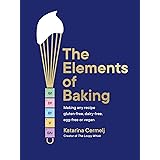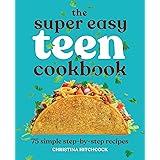The global demand for plant-based beverages has surged dramatically in recent years. Reports suggest a market growth exceeding 10% annually. Many consumers now choose dairy alternatives for health or ethical reasons. Among these, homemade almond milk stands out. It offers a fresh, pure option. The video above provides a quick guide. It shows how simple making your own nut milk can be. This article expands on those key steps. It delves into why homemade truly makes a difference.
The Foundation of Flavor: Why Soak Your Almonds?
The video briefly instructs to soak your almonds overnight. This step is more crucial than it seems. Soaking raw almonds activates their enzymes. It also reduces phytic acid content. This acid can hinder nutrient absorption. Studies indicate improved digestibility post-soaking. Soaked nuts become softer too. This makes them easier to blend. Using 130 grams of almonds, as shown, is a great starting point. The soaking process should ideally last 8-12 hours. Ensure almonds are fully submerged in water.
Unlocking Nutrient Potential
Research suggests soaking can increase mineral bioavailability by up to 20%. This means your body can absorb more goodness. These include essential minerals like magnesium and zinc. It also improves the texture of the finished milk. A smoother, creamier consistency is often achieved. Always drain and rinse your soaked almonds thoroughly. This removes enzyme inhibitors. It prepares them for the next blending stage. This simple preparation boosts the nutritional value significantly.
Blending Brilliance: Crafting Your Nut Milk Base
After soaking, the next step involves blending. The video combines 130 grams of soaked almonds with 750 milliliters of water. This ratio creates a rich, creamy almond milk. High-speed blenders yield the best results. Blend for at least 1-2 minutes. The mixture should appear smooth and milky. Some blenders may require longer times. Aim for a fine, uniform consistency. This ensures maximum flavor extraction. It also makes straining easier later on. Don’t rush this important blending phase.
Achieving Optimal Creaminess
Using cold, filtered water helps maintain freshness. Blend in short bursts initially. This prevents the mixture from overheating. Overheating can sometimes degrade delicate nutrients. A strong motor ensures all almond particles are processed. This releases their natural oils and flavors. The resulting liquid will be thick. It should have a slightly frothy top. This is a good indicator of successful blending. Optimal blending is key for a delicious finished product.
The Art of Straining: Pure and Smooth Goodness
The video humorously demonstrates the squeezing action. Straining is vital for smooth homemade almond milk. Use a fine-mesh nut milk bag. Cheesecloth layers can also work effectively. Place your chosen straining tool over a large bowl. Pour the blended almond mixture inside. Gather the top of the bag or cloth. Then, squeeze firmly and steadily. Extract as much liquid as possible. This step requires patience and strength.
Maximizing Your Yield
Repeat the squeezing process multiple times. You want to extract every drop of liquid. The remaining solids are almond pulp. This pulp can be saved for other uses. Some studies show that proper straining improves texture. It removes all gritty bits. This leaves behind silky smooth milk. The purity of homemade almond milk is unmatched. Store-bought options often contain stabilizers. These can alter the natural mouthfeel. Enjoy the satisfying feeling of creating a truly pure product.
- **Almond Pulp Crackers:** Mix pulp with flax seeds and spices. Bake until crispy.
- **Energy Bites:** Combine pulp with dates, oats, and nut butter. Roll into balls.
- **Flour Substitute:** Dehydrate and grind the pulp. Use in gluten-free baking.
Beyond the Basics: Benefits of Homemade Almond Milk
Why go through the effort of making your own? Store-bought almond milk often contains additives. These include thickeners, emulsifiers, and added sugars. A survey found over 70% of commercial brands include added sugars. Homemade versions contain only almonds and water. You control every single ingredient. This leads to a purer, healthier drink. It is also naturally dairy-free and vegan. This makes it perfect for many dietary needs.
Nutritional Highlights and Purity
Homemade almond milk retains more nutrients. It is rich in Vitamin E, a powerful antioxidant. It also provides healthy monounsaturated fats. These fats support heart health. Commercial processing can sometimes degrade these delicate compounds. Freshly made milk boasts a higher concentration of beneficial micronutrients. It offers a cleaner taste too. The difference in freshness is immediately noticeable. You truly taste the almonds. This is a significant advantage for homemade options.
Customizing Your Creation: Flavor Variations and Uses
The beauty of homemade almond milk is its versatility. You can easily infuse different flavors. Add a pinch of sea salt for enhanced taste. A dash of vanilla extract provides warmth. Sweeten with dates, maple syrup, or agave nectar. Blend these additions directly with the almonds and water. This ensures even distribution of flavor. Adjust sweetness to your personal preference. The possibilities for customization are vast. Experiment with different spices like cinnamon or cardamom.
Diverse Applications for Your Fresh Milk
Your homemade almond milk is perfect in coffee. It adds a delicate nutty note. Use it in your morning smoothie recipes. It provides a creamy, dairy-free base. Bake with it for moist, flavorful results. Replace regular milk in virtually any recipe. Enjoy it simply poured over cereal. It truly elevates everyday meals. The fresh, clean taste brightens up any dish. This homemade beverage is incredibly versatile.
Storage and Shelf Life: Keeping Your Milk Fresh
Homemade almond milk does not contain preservatives. Its shelf life is naturally shorter. Store it in an airtight container. Keep it refrigerated at all times. Properly stored, it lasts for 3-5 days. Always check for any off-smells or discoloration. A slight separation is normal. Just give it a good shake before serving. For best flavor, consume within three days. Making smaller batches ensures consistent freshness. Labeling with the date made is always a good idea.
Creating your own homemade almond milk provides numerous benefits. It offers a purer, additive-free drink. You control the ingredients completely. This results in a fresh, delicious beverage. It can be more cost-effective too. Enjoy the satisfaction of making this versatile plant-based milk. This simple kitchen skill empowers you greatly.











